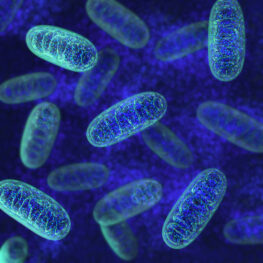“My SPARK award gave me the confidence that I needed to believe in my scientific skills and opened the doors to new opportunities. It was great to be in close contact with several LJI donors who, through their passion and commitment, supported me throughout this year.”
What if we could convert pro-tumor cells into tumor-fighting cells?
Funded: January 2022
Funded By: The generosity of LJI Board Director Emeritus Larry Spitcaufsky and Tiki Spitcaufsky
What was the goal of your SPARK project?
Anti-tumor immunotherapies that boost killer-cells represent a major breakthrough in cancer treatment. However, suppressive cells can enter the tumor and block tumorkiller cells. This is a major roadblock in the field of cancer immunotherapy. This unbalance between pro-tumoral and tumor-killer T cells in the tumor tissue is favored by the tumor’s metabolic environment, which strongly inhibits the protective function of anti-tumor killer cells, while enhancing pro-tumor T cell function. My SPARK project aimed to uncover how nutrient availability in tumor tissue can impact how tumor-killing T cells differentiate and function. Ultimately, I want to know how we can transform pro-tumoral cells into tumor-fighting cells by modulating nutrient availability.
Did you face any challenges?
I needed to make several optimizations on the in vitro system that I was working on. As this system is the foundation of the entire project, it was important to make sure that everything was done correctly. This step delayed the proposed initial timeline but I was able to get back on track.
SPARK project results:
For this project, it was important to develop an in vitro model: a model where we could generate (in petri dishes) tumor-killer T cells similar to the ones that we find in our immune system. While the model to generate pro-tumoral T cells is well studied, how to generate tumor-killer T cells remains unexplored. Thus, most of my time was dedicated to characterizing and optimizing a differentiation protocol for these cells. I optimized a protocol that generates three different cell types that share common features with the killer T cells of our immune system and two cell types that share characteristics with pro-tumoral T cells. I then started work to optimize the necessary protocols for performing proteomics analysis. This technique will allow me to identify thousands of differentially expressed proteins between tumor-killer and pro-tumor cells. Proteomic analysis in T cells is challenging, and I tested several protocols. After proteomics optimization, I performed different independent experiments in order to have samples (tumor killer and pro-tumor T cells) for my proteomics screening. I am now performing proteomic analysis of the collected samples. The outcome of this screening will help me to choose interesting metabolic genes that could be targeted to skew the balance between tumor-killing and pro-tumor T cell development. I hope to identify a specific condition that turns pro-tumor T cells into tumor-fighting cells. This will be crucial for the improvement of current cancer immunotherapies.
What’s next for this project?
I plan to pursue this study and identify metabolic factors that can be targeted to convert pro-tumor T cells into tumor-fighting cells. This project included several technical challenges that had to be overcome by months of protocol optimizations. Now that the important foundations of this project are ready, I can confidently move on for the next steps. I intend to publish this work once the next phase of experiments are completed.
What’s next for Maria?
I recently applied for a grant from a private foundation using the preliminary data obtained from my SPARK project. If I win this grant, I’ll have one year of salary guaranteed and funding for the next round of experiments. I would also be in close collaboration with Pfizer. In a few years I would like to be running my own independent laboratory.
